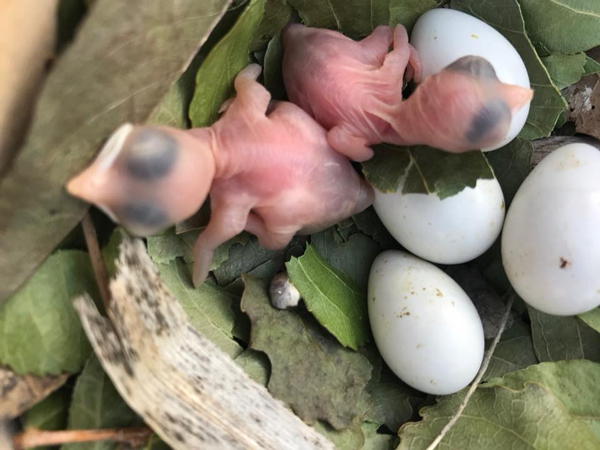Purple Martin |
||||||||
 |
||||||||
| Male Purple Martin - Here, you can see really see the male's beautiful purple plumage | ||||||||
| Photo Credit: Tony Garretson | ||||||||
|
The purple martin is the largest swallow in North America. Being the largest species of swallow, however, doesn't mean its large compared to other birds. At about seven inches in length, the purple martin is a little smaller than a cardinal. Males are entirely glossy blue or purple and appear black unless viewed up close. Males attain their purple plumage after their second year. Females are dusky grayish purple with white underparts. Both males and females have slightly forked tails. These birds are powerful and prolific flyers and spiral in all directions in pursuit of flying insects such as moths and dragonflies. Hunting martins engage in spectacular aerial maneuvers that delight those who are lucky enough to host them. They often chatter, squeak, and squawk in flight.
Purple martins are colonial nesters, which means they nest together in groups. In the eastern United States, these birds are entirely dependent on a dedicated group of "landlords" who erect and care for purple martin houses or sets of gourds, which are placed atop poles or networks of poles. These landlords often work tirelessly to care for their colonies and take measures to remove invasive pests such as house sparrows and starlings; and use pole guards and decoys to deter native predators such as snakes, hawks, and owls from raiding their colonies. Some colonies may include hundreds of nesting pairs, while others may have only a few. Purple martins are very picky about habitat, and will only "move in" if the environmental conditions are just right. Martin houses should be erected in an open space with few or no trees in the immediate vicinity of the house. A nearby river, lake, or shore, is ideal but not required for martins. Telephone wires, fences, eaves, and even houses or buildings provide perches. Interestingly, in the western United States, martins nest in tree cavities rather than "houses."
In the fall, purple martins migrate south. During migration, they may gather in great numbers to travel together. These birds travel all the way to South America to spend the winter. During this time, "landlords" have time to clean their martin houses so they'll be ready in March or April when their beloved martins return. Martins are "loyal" to their landlors. If they are successful in raising young, they will faithfully return to the same houses each year.
|
||||||||


